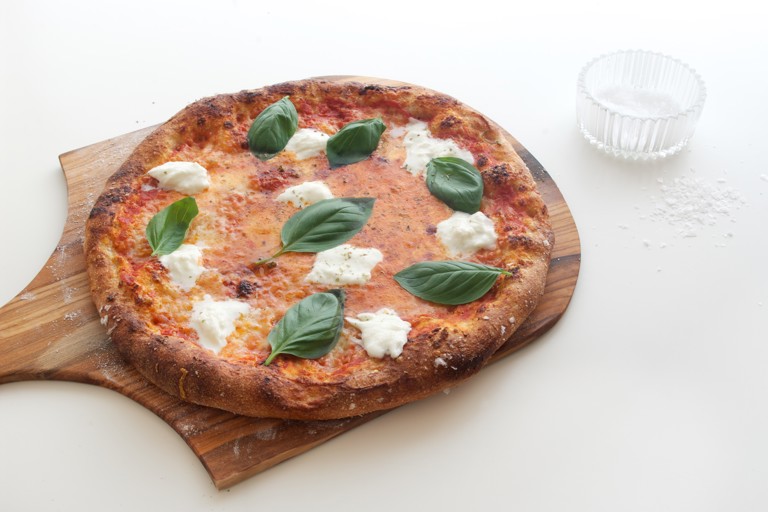Perfect pizza
- medium
- Makes 6
- 3 hours
Making perfect pizza in a home oven takes patience and care, but your reward is truly remarkable pizza – the best you’ve ever tasted. Bubbly and browned, crispy and crunchy, it is packed with nutty flavour.
I have dedicated much of my life to the pursuit of amazing pizza, that elusive delight. For something so simple, made of such few ingredients, the variety – and difference in quality – is staggering. I have eaten pizza all over the world, trained with master Roman pizza maker Gabriele Bonci and even run my own pizzeria. I have made pizza in every home oven I have ever had (and with my travel-happy life, that’s a lot of ovens), each oven with its own quirks, for good and for bad. This recipe is the result of that labour.
Ingredients
Metric
Imperial
Pizza dough
- 600g of warm water
- 15g of fresh yeast, or 1 level teaspoon dry yeast
- 370g of strong white bread flour
- 370g of strong wholemeal flour
- 1 1/2 tsp vital wheat gluten
- 2 tsp honey, (lightly heaped)
- 4 tsp flaky sea salt, plus more for sprinkling
- extra virgin olive oil, for drizzling
- semolina, or whole wheat flour for shaping
Pizza sauce
- 400g of canned plum tomatoes, (preferably organic)
- 3 garlic cloves, crushed
- 1 handful of basil leaves
- 1 tsp dried oregano
- 1 tsp flaky sea salt
- freshly ground black pepper
- lemon juice, 1 squeeze
- 1 tbsp of extra virgin olive oil
Margherita toppings
- 5 tbsp of mature cheddar, grated (or Parmesan)
- mozzarella cheese, (cow mozzarella)
- buffalo mozzarella, added after baking
- basil leaves
Method
Get in touch
Please sign in or register to send a comment to Great British Chefs.

